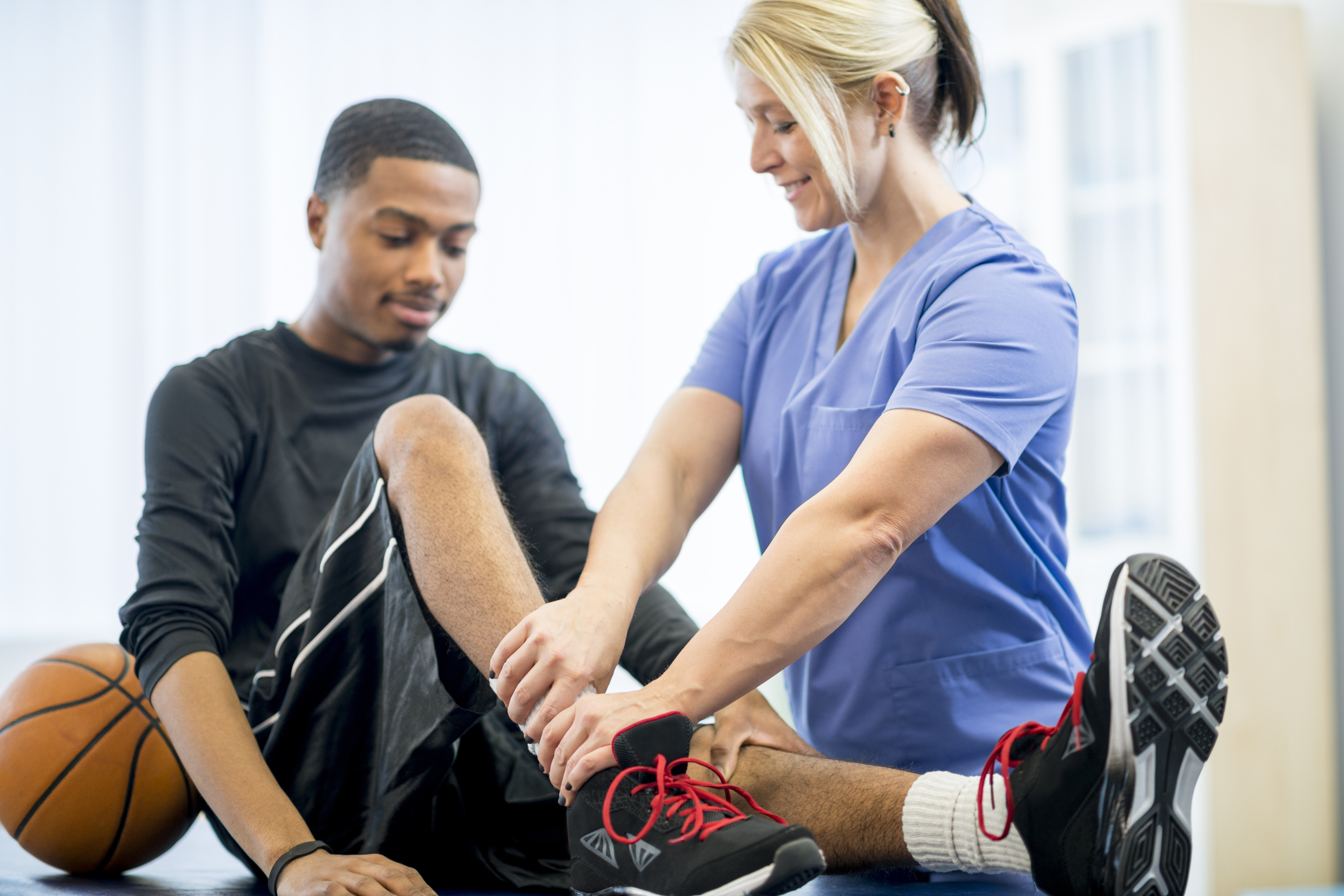
Physical Therapy to Athletes
Are you an athlete looking for an edge in your competitions? Check out the benefits of physical therapy and how it can give you that edge. If you participate in sports or other physical activities, you must be familiar with the load and physical strain on muscles, joints, and ligaments. To keep up with your daily performance expectations, you must recover adequately from the strain of the previous activity.
Physical therapy is an important aspect of keeping an athlete in top form. An injury can keep you out of the game for a long time without the right care. Injuries prevent you from improving yourself as required. Physical therapy is not something to ignore if you want to remain at your peak performance level or even level up. In this article, we’ll discuss the benefits of physical therapy.
What is Physical Therapy?
Physical Therapy, as a component of sports healthcare, focuses on enhancing your mobility and function. In physical therapy, your condition gets evaluated, and a care plan that is suited to your condition is developed. Physical therapists use massages, stretches, heat or cold therapy, and other therapy and special exercises to help you.
In physical therapy, some of the things that can be evaluated and corrected include:
- Balance and posture
- The way you walk, run or even stand
- The mobility of your joints, your reach, and your ability to switch direction
- Your heartbeat and breathing patterns while you are active and inactive.
When you’ve been evaluated in these aspects, the physical therapist can now guide you with a plan to help you feel, perform or recover better.
Benefits of Physical Therapy to Athletes?
As an athlete, to compete regularly and at a high level, being sidelined by injury is something you should try to avoid. Physical therapy is more than just a treatment. It can help you prevent injuries, reduce their severity or enhance your recovery. Some techniques also aid your conditioning and endurance and improve your performance.

Below are some of the advantages that you can gain as an athlete from a good physical therapy plan:
1. Injury Prevention
Injuries can occur during your activities or through incorrect or inadequate training. Good physical therapy can prevent injuries like muscle cramps, strains, sprains, and torn ligaments. Being proactive enough to undergo physical therapy can help you take note of possible risk factors that can leave you prone to injuries.
2. Treatment of Injuries
Sometimes you can do your best to prevent injuries, but accidents still occur. This is quite common in contact sports. These injuries can be taken care of by some time off and good physical therapy. In the case of severe injuries, you may need to go under the knife. The time it will take you to recover from surgery can be reduced significantly with the help of physical therapy.
3. Muscle flexibility and Joint Mobility
Almost all sports require one form of flexibility or the other. Your ability to reach out for a one-handed grab as a wide receiver, make a top corner save as a goalkeeper, or catch and convert a high-placed alley-oop depends on your flexibility and mobility of the muscles and joints around your shoulder and arms. So also, other muscles and joints are crucial in other actions. Physical therapy promotes flexibility, and being flexible also reduces your risk of sustaining injuries.
4. Physical Strength and Cardiopulmonary Benefits
Some physical therapy programs are designed to work on improving your endurance. They focus on cardio and breathing patterns. Your breathing patterns impact how your muscles perform, providing energy and delaying fatigue. Some physical therapy techniques focus on strengthening muscles, ligaments, and joints. This allows them to handle the stress and knocks that they may go through during your activities.
5. Career Longevity
So many promising athletes have had their careers cut short due to injuries. At the same time, we also see athletes who have defied “father time” and continued to perform at a high level despite their age. Tom Brady, LeBron James, and Cristiano Ronaldo are good examples of athletes who have had very long and productive careers. Something they have in common, aside from being hard workers, is that they are highly committed to physical therapy. As an athlete, you must find ways to stay high for a long time. With specific techniques in physical therapy, you can achieve just that.

Which Athletes Should Undergo Physical Therapy?
A phrase used by physical therapists is “prehab is better than rehab.” Injuries are part of sports, but most of these injuries can be avoided with the help of physical therapy. The improved strength, flexibility, and range of motion acquired from physical therapy are valuable in preventing injuries.
All athletes, regardless of their sport, should commit to physical therapy to stay competitive.
What Are The Forms of Physical Therapy Available to Athletes?
Physical therapy exists in different forms, and they are all beneficial to athletes. Here is a list of physical therapy available to athletes:
1. Exercise therapy
It works to increase strength and flexibility in specific muscle groups needed for your sport. The techniques also help to improve balance and range of motion.
2. Contrast therapy
This involves alternating immersion of a body part in hot and ice water. It helps loosen up joints and accelerate recovery.
3. Massage Therapy
This helps to reduce muscle tension and increase circulation. It leads to quicker recovery after a game or training and enhances your performance. Massage therapy also improves your flexibility and range of motion.
4. Biofeedback Therapy
The goal of this therapy is to enable the athlete to manipulate the physiological functions of the body systems at will. You can learn to control your breathing pattern, heart rate, and muscle contractions.
5. Ultrasound Therapy
Using ultrasound waves to create heat is an effective way to treat some conditions. This heat penetrates deep into the muscles and tissues. This therapeutic method can help reduce pain, enhance your range of motion, and facilitate healing.
6. Nutritional Therapy
For peak performance as an athlete, your nutrition is vital. Your physical therapist will guide you toward the right diet and strategic supplement usage.
Conclusion
The benefits of physical therapy to athletes cannot be overemphasized. With the increase in physicality and competitiveness in most sports, it is essential to avoid injuries that can keep you on the sideline for weeks or even months. Physical therapy can help you recover from injuries quicker and prevent them from happening altogether.








Leave a Comment